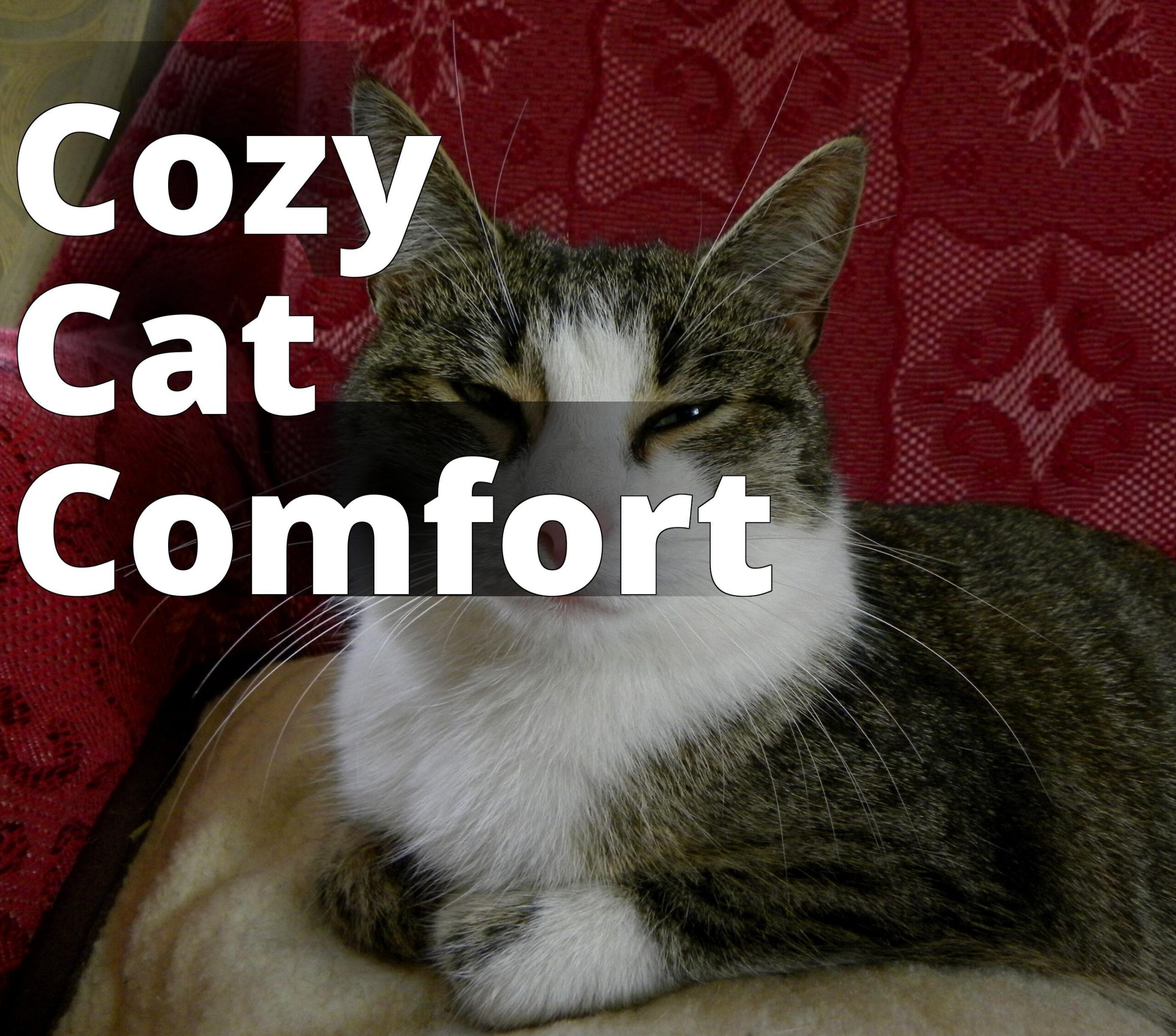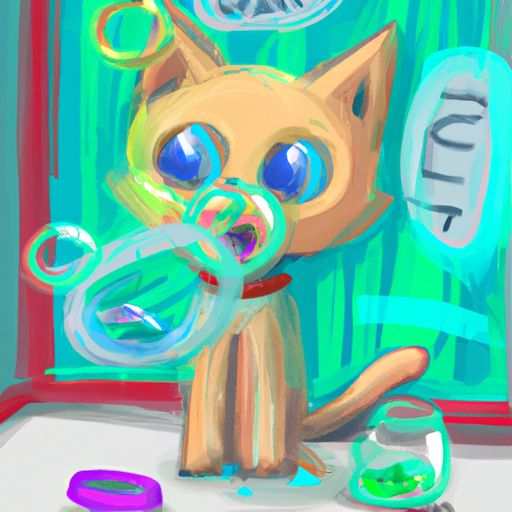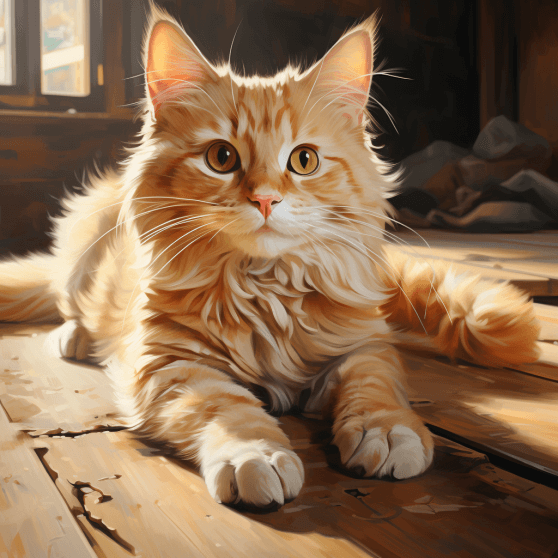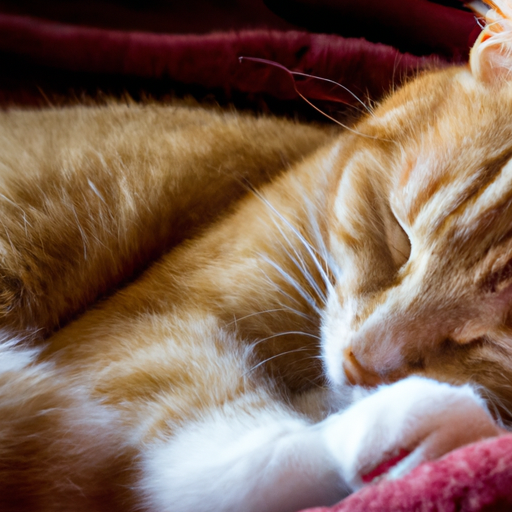Cats Sitting: A Guide to Understanding Feline Relaxation and Behavior
What You Will Learn About Cats Sitting
- The science behind cats’ preference for sitting on square-shaped objects and the role of illusory-contour perception.
- The importance of providing cozy and safe sitting spots for cats and creating inviting sitting areas.
- How to decode your cat’s body language while sitting and promote healthy sitting habits in cats.

The Science Behind Cats’ Sitting Behavior
When it comes to cats and their sitting behavior, there is more than meets the eye. Have you ever noticed how cats seem to gravitate towards sitting on square-shaped objects? It turns out that this behavior has been the subject of scientific study. Researchers have explored why cats have a preference for sitting on squares and what this behavior reveals about their instincts and perception.
A study published in Vice magazine titled “Scientists Have Studied the Mysterious Behavior of Cats Sitting on Squares” sheds light on this fascinating phenomenon. The study found that cats are drawn to square-shaped objects due to their illusory-contour perception. Illusory-contour perception refers to the ability to perceive the edges of an object that is not physically present. In the case of squares, cats perceive the edges and are attracted to them, making them inclined to sit on square-shaped surfaces.
The research was conducted using citizen science, where cat owners were asked to provide data on their cats’ sitting preferences. The study found that illusory-contour perception is crucial for cats to navigate their environment. Cats’ ability to perceive squares helps them identify boundaries and provides a sense of safety. However, it is important to note that this behavior may not be exclusive to domesticated cats, and further research is needed to understand how this behavior translates to non-domesticated cats.
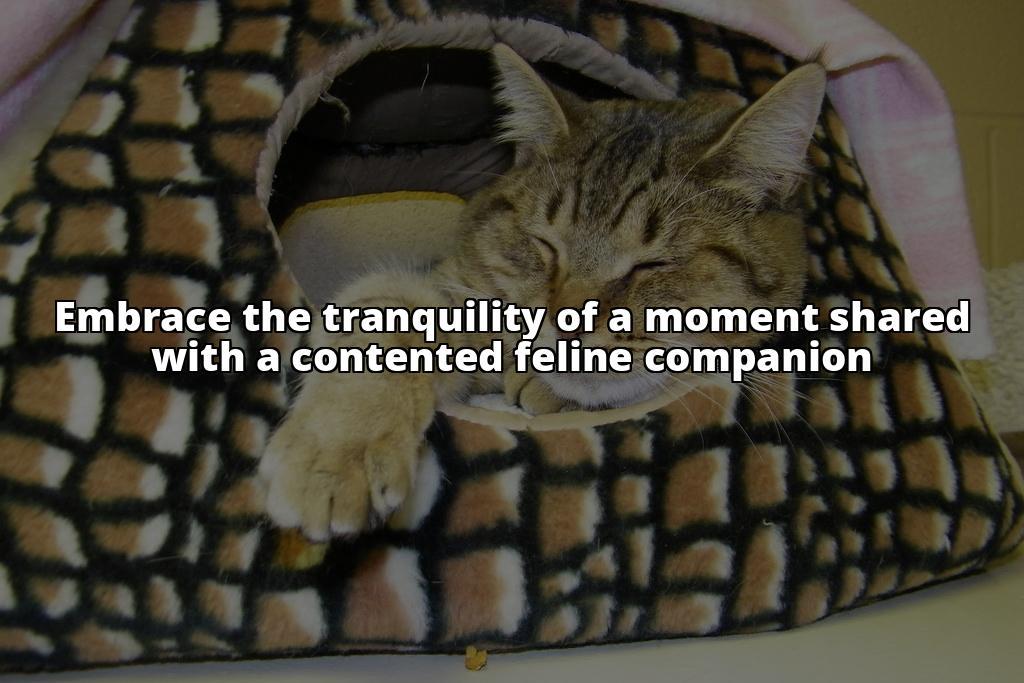
The Comfort of Cats Sitting
As cat owners, it’s essential for us to create comfortable and inviting sitting areas for our feline friends. Cats value their comfort and safety, and providing cozy sitting spots can contribute to their overall well-being. Understanding different sitting positions and their implications for feline comfort can help us create the perfect environment for our cats to relax.
Cats have a variety of sitting positions, each with its own meaning. When a cat sits with its paws tucked underneath its body and eyes half-closed, it is a sign of relaxation and contentment. This position, often referred to as the “loaf” position, allows cats to conserve body heat and feel secure. On the other hand, if a cat sits with its hind legs stretched out to the side and its body low to the ground, it may be a sign of caution or discomfort.
To create inviting sitting areas for your cat, consider providing comfortable beds, blankets, and perches. Cats enjoy soft surfaces where they can knead and make themselves comfortable. Placing a blanket or a soft cushion in their favorite spots can provide additional comfort. Elevated perches, such as cat trees or window perches, give cats a sense of security and a vantage point to observe their surroundings.

Decoding Your Cat’s Body Language While Sitting
Cats communicate through body language, and understanding their signals can help us gauge their comfort level and well-being. While sitting, cats exhibit various body language cues that give insights into their mood and state of mind. By paying attention to their tail positions, ear positions, and eye expressions, we can better understand our cats’ needs and respond accordingly.
A cat’s tail can convey a range of emotions while sitting. If your cat’s tail is relaxed and gently curved, it indicates contentment and relaxation. On the other hand, a tail tucked between the legs or vigorously swishing from side to side may indicate fear or agitation. It’s important to respect your cat’s boundaries and give them space if they show signs of discomfort.
Ears also play a significant role in a cat’s body language. When a cat’s ears are in a neutral position, facing forward, it indicates a relaxed and content state. However, if the ears are flattened against the head, it may be a sign of fear or aggression. Observing your cat’s ear positions while sitting can help you gauge their comfort level and respond appropriately.
In addition to tail and ear positions, a cat’s eyes can reveal a lot about their emotions. When a cat’s eyes are half-closed or fully closed while sitting, it signifies relaxation and trust. However, dilated pupils and wide-open eyes may indicate fear or arousal. By paying attention to your cat’s eye expressions, you can ensure their comfort and well-being.

Promoting Healthy Sitting Habits in Cats
While cats enjoy their sitting time, it’s crucial to promote a healthy balance between sitting and physical activity. Just like humans, cats need regular exercise to maintain their overall health and prevent sedentary behavior. By engaging cats in interactive toys and activities, we can keep them physically and mentally stimulated.
Interactive toys, such as puzzle feeders or treat-dispensing toys, encourage cats to move and play while satisfying their hunting instincts. These toys require cats to use their paws and engage in problem-solving, providing mental stimulation and exercise. Additionally, interactive play sessions with feather wands or laser pointers can help cats burn off excess energy and keep them physically active.
It’s also important to provide cats with scratching posts and climbing structures. Cats have a natural urge to scratch, and providing them with appropriate scratching surfaces can prevent them from damaging furniture or carpets. Climbing structures, such as cat trees or shelves, give cats the opportunity to climb, explore, and exercise their muscles.
Case Study: Promoting Healthy Sitting Habits in Cats
Meet Sarah, a devoted cat owner who recently noticed that her cat, Luna, has been spending an excessive amount of time sitting and lounging around the house. Concerned about Luna’s sedentary behavior, Sarah decided to take action to promote healthier sitting habits for her feline friend.
Sarah began by introducing interactive toys and activities to engage Luna physically and mentally. She purchased a variety of toys, such as feather wands and puzzle feeders, to encourage Luna to move and play. By incorporating playtime into Luna’s daily routine, Sarah noticed that Luna became more active and spent less time sitting idly.
To further encourage Luna to be active, Sarah invested in a scratching post and climbing structures. Luna quickly took a liking to the scratching post, using it to stretch her muscles and engage in natural scratching behavior. Sarah also added a tall cat tree with multiple levels and perches, providing Luna with opportunities to climb, jump, and explore her surroundings. These additions not only minimized Luna’s sedentary behavior but also stimulated her natural instincts.
In addition to playtime and physical activities, Sarah made sure to provide Luna with a balanced diet and plenty of fresh water. She consulted with her veterinarian to determine the appropriate amount of food and established a feeding routine to prevent overeating. Sarah also set up multiple water bowls throughout the house to ensure that Luna stayed hydrated, as proper hydration is essential for overall health and well-being.
Since implementing these changes, Sarah has seen a remarkable improvement in Luna’s overall health and well-being. Not only has Luna become more active and engaged, but she also appears happier and more content. By promoting healthy sitting habits, Sarah has created a balanced and enriching environment for Luna, ensuring that she leads a fulfilling and active lifestyle.
Sarah’s experience with Luna serves as a testament to the importance of promoting healthy sitting habits in cats. By incorporating playtime, providing appropriate scratching and climbing structures, and maintaining a balanced diet, cat owners can help prevent sedentary behavior and ensure the long-term health and well-being of their feline companions.
Capturing the Perfect Cat Sitting Photos
Cat sitting photos capture the essence of feline relaxation and make for adorable keepsakes. Whether you’re a professional photographer or simply an enthusiastic cat owner, capturing the perfect cat sitting photo can be a rewarding experience. Here are some tips to help you take visually appealing and captivating cat sitting photos.
- Lighting: Good lighting is essential for capturing clear and vibrant photos. Natural light is often the best option, so try to position your cat near a window or in a well-lit area. Avoid using flash, as it can startle or disturb your cat.
- Composition: Consider the composition of your photo to create visually pleasing images. Experiment with different angles and perspectives to capture your cat’s unique personality. Get down to their eye level for a more intimate and engaging shot.
- Background: Choose a simple and uncluttered background to keep the focus on your cat. Solid-colored walls or blankets can serve as excellent backdrops. Avoid busy or distracting backgrounds that may take away from the main subject.
- Props and Accessories: Adding props and accessories can enhance the aesthetic appeal of your photos. Consider using toys, blankets, or baskets to create interesting and visually appealing compositions. Be mindful of your cat’s comfort and safety when using props.
Remember, patience is key when photographing cats. Allow your cat to get comfortable in the chosen sitting spot and use treats or toys to capture their attention. Take multiple shots to increase your chances of getting that perfect shot that showcases your cat’s unique sitting behavior.
Cat Sitting Services: Ensuring Comfort in Your Absence
If you find yourself away from home for an extended period, it’s important to ensure that your cat receives the care and attention they need. Professional cat sitting services can provide personalized care for your cat in the comfort of their own environment. These services offer companionship, feeding, litter box maintenance, and playtime, ensuring that your cat feels safe and secure in your absence.
When choosing a cat sitting service, it’s important to find a reputable provider who understands the specific needs of cats. Look for services that have positive reviews and recommendations from other cat owners. A good cat sitting service will offer a consultation to get to know your cat’s routine, preferences, and any specific medical needs they may have.
During the consultation, discuss your cat’s sitting habits, favorite spots, and any behavioral quirks they may have. This will help the cat sitter create a comfortable and familiar environment for your cat. Ask about the sitter’s experience with cats and inquire about their approach to handling any potential issues that may arise.
Leaving your cat in the care of professionals allows you to travel or attend to other responsibilities with peace of mind, knowing that your furry friend is in good hands. By providing personalized care and attention, cat sitting services ensure that your cat’s routine and well-being are maintained even in your absence.
Related Questions
Why do cats sit in circles?
Cats have a natural inclination to find cozy and secure spots to rest. Circular objects, such as boxes or baskets, provide cats with a sense of enclosure and safety. The circular shape creates a defined boundary that cats find comforting. Sitting in circles may also be a way for cats to conserve body heat and feel secure.
What are some common sitting positions for cats and what do they mean?
Cats have a variety of sitting positions, each with its own meaning. The “loaf” position, where a cat sits with its paws tucked underneath its body, signifies relaxation and contentment. The “perch” position, where a cat sits with its hind legs stretched out to the side, may indicate caution or discomfort. Paying attention to your cat’s sitting position can give you insights into their mood and comfort level.
How can I encourage my cat to sit in certain areas of the house?
To encourage your cat to sit in certain areas of the house, make those areas inviting and comfortable. Place cozy beds, blankets, or perches in the desired spots. Cats are attracted to soft surfaces, so providing comfortable sitting options will encourage them to choose those areas. Additionally, you can use treats or toys to attract your cat’s attention and reward them for sitting in the desired spots.
Is it normal for cats to sit for long periods of time?
Yes, it is normal for cats to sit for extended periods of time. Cats are naturally inclined to conserve energy and rest. However, it’s important to ensure that your cat gets regular exercise and playtime to maintain their overall health and prevent sedentary behavior. Balancing sitting time with physical activity is key to keeping your cat happy and healthy.
Can cats develop health issues from sitting too much?
While cats enjoy their sitting time, excessive sitting can contribute to health issues such as obesity and muscle stiffness. It’s important to provide regular exercise and mental stimulation to prevent these issues. Interactive play sessions, climbing structures, and scratching posts can help keep your cat active and engaged. If you have concerns about your cat’s sitting habits, consult with your veterinarian for guidance.
Conclusion
Understanding and nurturing cats’ sitting behavior is essential for their well-being and happiness. By creating comfortable and inviting sitting areas, decoding their body language, and promoting healthy habits, we can ensure that our feline friends are content and relaxed. Capturing the perfect cat sitting photos allows us to cherish their unique personalities and share their adorable moments with others. And when we are away, relying on reputable cat sitting services gives us peace of mind, knowing that our cats are well cared for. So, let’s observe, care for, and appreciate the fascinating sitting habits of our beloved cats.

